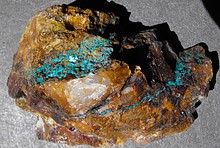Learning CenterWhat is a mineral?The most common minerals on earthInformation for EducatorsMindat ArticlesThe ElementsThe Rock H. Currier Digital LibraryGeologic Time
搜索矿物的性质搜索矿物的化学Advanced Locality Search随意显示任何一 种矿物Random Locality使用minID搜索邻近产地Search Articles搜索词汇表更多搜索选项
╳Discussions
💬 Home🔎 Search📅 LatestGroups
EducationOpen discussion area.Fakes & FraudsOpen discussion area.Field CollectingOpen discussion area.FossilsOpen discussion area.Gems and GemologyOpen discussion area.GeneralOpen discussion area.How to ContributeOpen discussion area.Identity HelpOpen discussion area.Improving Mindat.orgOpen discussion area.LocalitiesOpen discussion area.Lost and Stolen SpecimensOpen discussion area.MarketplaceOpen discussion area.MeteoritesOpen discussion area.Mindat ProductsOpen discussion area.Mineral ExchangesOpen discussion area.Mineral PhotographyOpen discussion area.Mineral ShowsOpen discussion area.Mineralogical ClassificationOpen discussion area.Mineralogy CourseOpen discussion area.MineralsOpen discussion area.Minerals and MuseumsOpen discussion area.PhotosOpen discussion area.Techniques for CollectorsOpen discussion area.The Rock H. Currier Digital LibraryOpen discussion area.UV MineralsOpen discussion area.Recent Images in Discussions
Techniques for CollectorsCleaning Pyrite

13th Oct 2004 16:03 UTCAndy K
Just a quick question.
I have a large mass of Pyrite which is quite tarnished. How do I safely clean this to get it shining again (or is this impossible).
Please.. I'm not a chemist so all those nasty chemical solutions will be no good so does anyone know how to do this with general household stuff (but above all safely).
thanks
Andy K

14th Oct 2004 08:06 UTCGunnar Färber
put it in oxalic acid or in HCl both can help you.
Best Regards
Gunnar

14th Oct 2004 17:40 UTCalfredo
Cheers,
Alfredo

14th Oct 2004 19:17 UTCRob Woodside

15th Oct 2004 05:21 UTCAlan Plante
It would be helpful if you state where the specimen came from - and whether or not it is a matrix piece, the matrix important to the specimen. Knowing where the specimen came from, someone clicking in here might know exactly what you need to do for specimens from that locality.
Barring that, you might want to try some less aggressive cleaning agents first - like a scrub with a scouring powder that doesn't have anything harder than 5 on the Mohs Scale in it - then maybe some Super Iron Out if the scouring powder doesn't work.
With any mineral that is prone to rusting or tarnishing, a thorough drying is required immediately following cleaning - even if it is just setting the stuff out in the sun, or on a windowsill that is getting sun. So be sure to dry the pyrite after you get it cleaned.
Regards
Alan

15th Oct 2004 14:50 UTCsgibby

9th Nov 2004 16:46 UTCAndy K
I actually got this from Lyme Regis in the UK (fell out of the cliff)
It's a bit massive but does contain some crystals..
Anyway.. more than enough idas..
Thanks again
Andy K

4th Jan 2005 21:58 UTCFranklin Roberts
Franklin Roberts
Austin, Texas

18th Jan 2005 01:02 UTCDave Baldwin
Incidently, this decompostion of pyrite ultimately destroys many beautiful fossils from Lyme Regis and Charmouth.
Dave

19th Jan 2005 09:27 UTCRock Currier
If you pyrite is not already shiny, I know of no way you can make it shiny except by polishing it with standard lapidary procedures. I have had good luck with cleaning pyrite with the commonly available Lime Away cleaner. I believe it contains phosphoric acid to some extent. If your pyrites are in pretty good shape but a little old and not as shiny as you remember them to be, try this product. Be sure to soak them in clean water thoroughly after using the product to be sure it has been removed from all the cracks in the specimen. It also works on chalcopyrite if it is not too far gone.
Rock Currier

19th Feb 2005 16:28 UTCPatrick Slavenburg
following up on this discussion: I bought a Bulgarian chalco with galena and sphalerite. The Chalco is a large separate crystal, covered with probably limonite (mostly). I cannot use an acid bath for fear of damaging the other crystals (which are physically separated from the chalco. Could I try cleaning the chalco with Sodium Dithionite or Lyme Away cleaner by just covering that particular chalco crystal, or does it need to lie in some bath for hours and hours ?
The Chalco crystal is quite big: 3-4 inches diameter, and it has a perfectly etched 2 inch galena attached to it, hence my eagerness to see if I can get lucky with a lustrous (or at least colorful) chalco. If you would have any other suggestions I'd be very much obliged !
Thanks
Patrick Slavenburg

27th Nov 2005 23:32 UTCRock Currier
I know nothing about the Chinese powder you mention. Any information you could give me about it would be appreciated. It is difficult to understand what kind of powder or chemical that it might be that would quickly allow one to make pyrite shiny.
Rock
20th Dec 2005 09:17 UTCKeith Compton 🌟 Manager
Why not try cleaning it gently wth a toothbrush and toothpast (whitening type) and tepid water. Then lightly rinse and dry thoroughly - and I mean thoroughly.
I have found that it will work in most cases and I have yet to find a pyrite / chalcopyrite specimen damaged in this way.
As many of these whitening toothpastes are now made in China perhaps that is the white powder referred to.
The toothpaste has not worn away my teeth - so it shouldn't wear away your Pyrite!!

13th Jan 2006 02:34 UTCben waitkus
13th Jan 2006 13:46 UTCDavid Von Bargen Manager
http://www.mindat.org/min-3314.html

26th Jun 2006 02:51 UTCAl
21st Sep 2006 12:36 UTCPaul Stahl
26th Sep 2006 20:52 UTCPeter Haas

1st Oct 2006 04:34 UTCGary Kutac

1st Oct 2006 05:24 UTCKyle Eastman
I would suggest sterilizing all pyrite specimens with ultraviolet light or some other method before storage or display to prevent damage! Interestingly, similar bactera have been shown to produce the CO2 that goes into the formation of copper carbonates--thus the banding in azurite and malachite represents season patterns of bacteria growth!
An interesting web site: http://www.astrobio.net/news/article202.html
-Kyle




版权所有© mindat.org1993年至2024年,除了规定的地方。 Mindat.org全赖于全球数千个以上成员和支持者们的参与。
隐私政策 - 条款和条款细则 - 联络我们 - Report a bug/vulnerability Current server date and time: 2024.4.20 02:29:26
隐私政策 - 条款和条款细则 - 联络我们 - Report a bug/vulnerability Current server date and time: 2024.4.20 02:29:26











